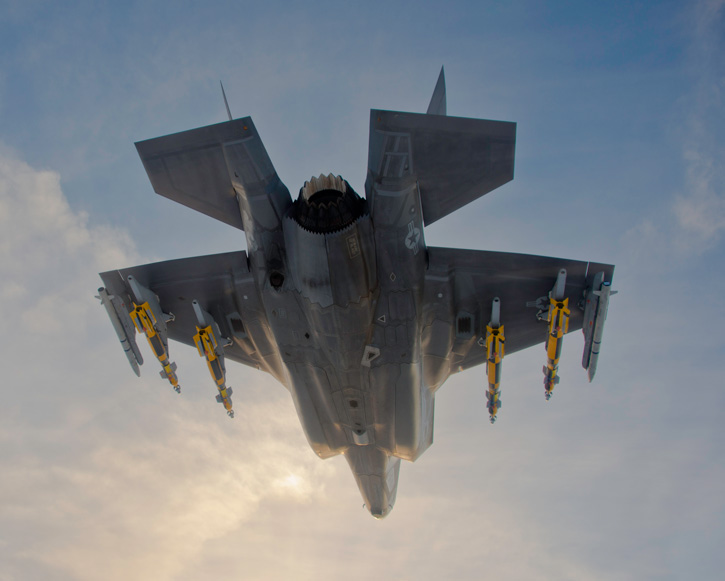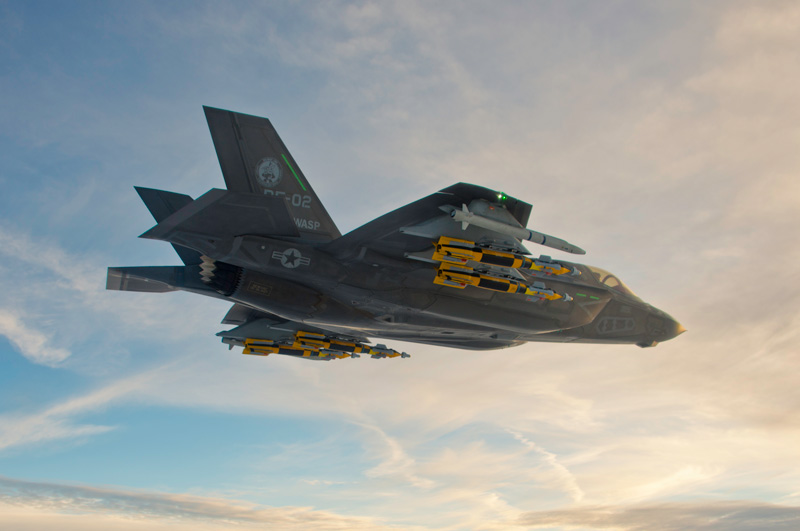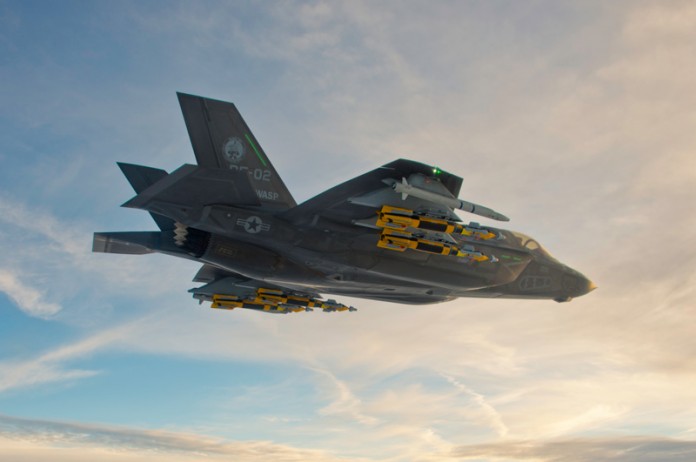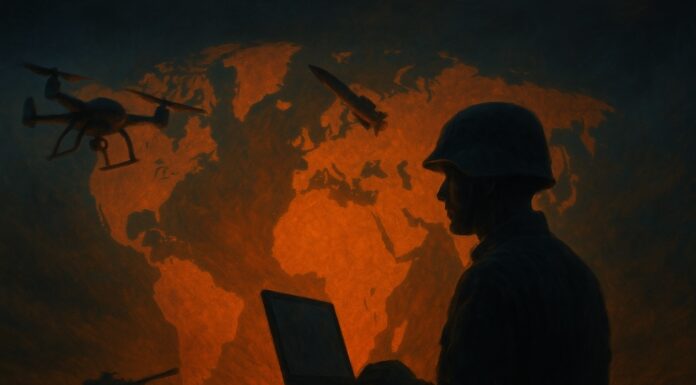
In recent test series, US Marine Corps F-35B Lightning II the combined test force configured to carry weapons load operated by the Royal Air Force completed initial aircraft handling trials carrying ASRAAM and Paveway IV weapons. The tests were carried out at Patuxent River Naval Air Station, MD in the USA by a test team including personnel from the UK BAE Systems.
Two F-35B Short Take Off / Vertical Landing (STOVL) aircraft, flown by Billie Flynn, Lockheed Martin’s F-35 test pilot, and Squadron Leader Andy Edgell from the RAF, completed nine flights with MBDA’s ASRAAM missiles and Raytheon’s Paveway IV enhanced laser guided bombs. The flights involved different configurations of both weapon types on the aircraft.
The test used ‘dummy’ weapons rounds, which are identical in fit and form to the operational weapons. The aircraft loaded with the weapons were tested on the STOVL aircraft. The initial tests are an important step in integrating weapons onto the F-35B, allowing test pilots to understand how they affect the way the aircraft performs and handles.
The next stage of weapons testing is due to begin early in 2015 and to involve weapon separation,followed by guided releases of both ASRAAM and Paveway IV.
The UK’s Royal Air Force (RAF) already uses ASRAAM and Paveway IV on the Eurofighter Typhoon and Panavia Tornado GR4. The successful tests are a step towards full interoperability between the current and future fast jets that will be used by the RAF and the UK’s Royal Navy from 2018.
Earlier this week the British Ministry of Defence (MOD) signed a contract for the first production batch of four Lightning II stealth combat aircraft, which will operate from both the Royal Navy’s new aircraft carriers and RAF land bases. The contract for the F-35B aircraft forms part of the MOD’s investment in Lightning II over the next five years to procure an initial 14 of these multi-role fifth-generation aircraft, as well as putting in place the necessary support arrangements and infrastructure.
Further contracts will cover the procurement of a range of equipment, including engines. Bernard Gray, the MOD’s Chief of Defence Materiel, confirmed that “the MOD remains on target for achieving both operational capability from land bases and the start of flying trials aboard the carrier HMS Queen Elizabeth in 2018 for this highly-advanced multi-role stealth combat aircraft.” The agreement is part of the 43 aircraft Low Rate Initial Production Block VIII contract awarded by the Joint Strike Fighter Program Office (JPO) last week.

Advanced weapons fit
The ASRAAM air/air missile developed and produced by MBDA is in service with the Royal Air Force on their Typhoon and Tornado aircraft. The weapon is also in service with the Royal Australian Air Force on their F/A-18 Hornet. ASRAAM is a Within Visual Range (WVR) Dominance weapon and is guided by a passive-imaging infra-red sensor. The missile can be cued by aircraft sensors, such as the radar or helmet mounted-display, but can also act as an autonomous infra-red search and track system. Supporting Lock On After Launch (LOAL) capability allows the the missile to be fired from the internal weapons bay of the F-35, by acquiring the target designated by the pilot on the radar or helmet display, without the missile’s seeker having to ‘see’ the target prior to launch. Its large rocket motor provides high-speed interception and this, coupled with its accurate-imaging infra-red guidance system and highly effective warhead, ensure high kill probability against any target.
The Paveway IV is a GPS/INS enhanced laser guided bomb, enabling precision attack of point targets from high altitude, using a combination of GPS/INS guidance to attack stationary targets and laser designation to achieve very high precision or engaging of moving targets. This combined guidance capability enables operators to increase operational flexibility, decreasing the required sortie count and weapon inventory, while simultaneously increasing the mission success rate.






















